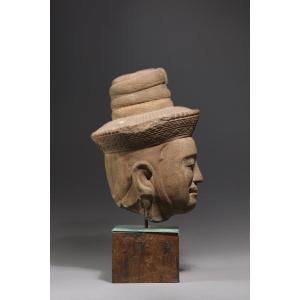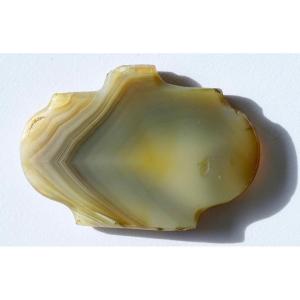Late Hellenistic Period – Imperial Roman Period
Height: 11.6 cm
Two labels with inventory numbers
Provenance: Parisian art market, former F.A. collection, likely in France since the 18th century.
This cylindrical ivory piece features a sculpted protome of a panther at the top. The back has been flattened, resembling a pseudo-dorsal pillar.
At first glance, this piece recalls the furniture decorations of Achaemenid art, which often feature animal protomes, particularly lion heads (e.g., MET inv. 54.3.3). However, a more naturalistic treatment reveals a Greek sensibility: the animal's features are finely modeled, less stylized than Achaemenid examples. The ears’ fur is delicately engraved, and the transitions between different parts of the sculpture are softened by a refined polish.
The style of this sculpture can be compared to that of the Lion of Halicarnassus (British Museum inv. 1857,1220.252). Following the Greek tradition, Romans also depicted wild animals in a naturalistic manner. More specifically, this sculpture closely resembles the Roman Imperial representations of panther-shaped trapezophorai/table legs) (see Louvre Ma 2580; B.M. 1805,0703.225; MET 23.160.83). The tubular shape suggests this piece likely adorned a luxury furniture post (B.M. E48311).
Additionally, a comparable object is held in the Cabinet des Médailles collection (inv.52bis.4611), which is thought to be the counterpart to this ivory. It has been known in Paris since at least the 18th century, as it appeared in the collection of the Comte de Caylus and was published in his Antiquités Égyptiennes (Vol. VI, pl.XII, I-II). It is therefore highly probable that this pair of ivories arrived in France at the same time.














































 Le Magazine de PROANTIC
Le Magazine de PROANTIC TRÉSORS Magazine
TRÉSORS Magazine Rivista Artiquariato
Rivista Artiquariato